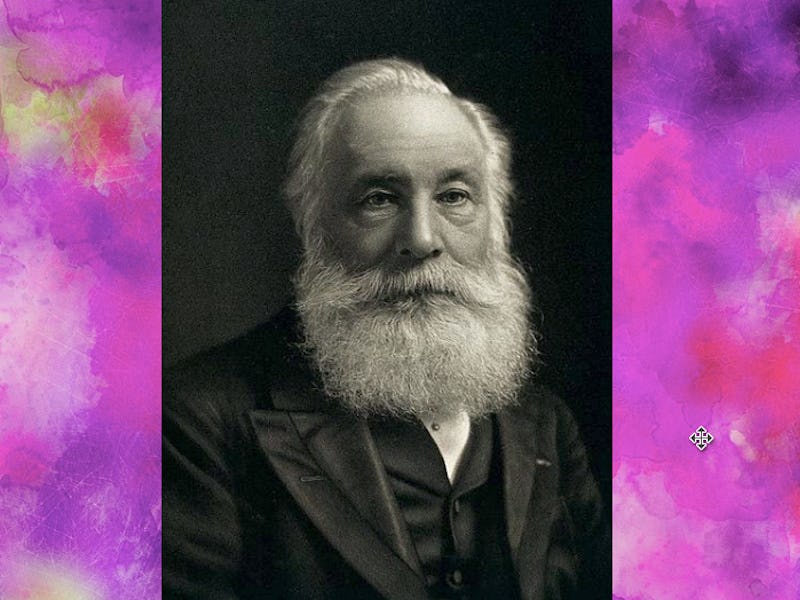Sir William Henry Perkin: The Weird Story of the Color-Changing Canal
The famous chemist accidentally dyed more than just clothes.

Monday’s Google Doodle commemorated the 180th birthday of Sir William Henry Perkin, the famed chemist who accidentally created the first synthetic fabric dye. Perkin’s discovery revolutionized the 19th-century fashion industry, and his effort to popularize it left a surprising mark on the London canal where his dyeing factory sat. Quite literally — his dyes were known to turn the river different colors.
Way before that happened, Perkin was an 18-year-old chemistry student attending London’s Royal College of Chemistry in 1856. It was during his spring break that Perkin was experimenting with discarded coal tar and accidentally made his life-changing discovery. He had set out to synthesize quinine, a pricy substance used to treat malaria. Experimenting with the organic compound aniline, Perkin ended up creating something entirely different — a black goo that could dye other objects a vivid shade of purple.
His discovery marked the first time that cloth had been dyed by anything other than natural resources like insects and plants.
Purple was one of the most fashionable colors of the Victorian era — lucky for William Perkin.
Realizing the momentous nature of his discovery, Perkin founded a small factory on the banks of the Grand Union Canal in West London. The name “mauveine” was coined for the purple dye to make it sound chic for the marketplace. It worked; the color definitely became of the moment in 1862 when, according to The Demon Under the Microscope by Thomas Hagar, Queen Victoria appeared at the Royal Exhibition in a mauve-colored silk gown.
Perkin’s discovery inevitably made him rich, and his factory went on to produce the synthetic dye as well as a host of other colors for many years. According to Hagar:
Perkin himself went on to discover Perkin’s Green, Britannia Violet and alizarin red, among other coal-tar dyes. Soon it was said that the water in Grand Union Canal changed color every week, depending on what shade Perkin was making.
Eventually, Germany’s expertise in chemistry and rampant industrial expansion made that country the leading purveyor in the synthetic dye industry. But Perkin’s discovery cemented him as a trailblazer, even if it was an accident.